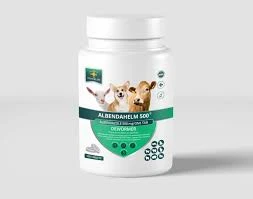- Afrikaans
- Albanian
- Amharic
- Arabic
- Armenian
- Azerbaijani
- Basque
- Belarusian
- Bengali
- Bosnian
- Bulgarian
- Catalan
- Cebuano
- Corsican
- Croatian
- Czech
- Danish
- Dutch
- English
- Esperanto
- Estonian
- Finnish
- French
- Frisian
- Galician
- Georgian
- German
- Greek
- Gujarati
- Haitian Creole
- hausa
- hawaiian
- Hebrew
- Hindi
- Miao
- Hungarian
- Icelandic
- igbo
- Indonesian
- irish
- Italian
- Japanese
- Javanese
- Kannada
- kazakh
- Khmer
- Rwandese
- Korean
- Kurdish
- Kyrgyz
- Lao
- Latin
- Latvian
- Lithuanian
- Luxembourgish
- Macedonian
- Malgashi
- Malay
- Malayalam
- Maltese
- Maori
- Marathi
- Mongolian
- Myanmar
- Nepali
- Norwegian
- Norwegian
- Occitan
- Pashto
- Persian
- Polish
- Portuguese
- Punjabi
- Romanian
- Russian
- Samoan
- Scottish Gaelic
- Serbian
- Sesotho
- Shona
- Sindhi
- Sinhala
- Slovak
- Slovenian
- Somali
- Spanish
- Sundanese
- Swahili
- Swedish
- Tagalog
- Tajik
- Tamil
- Tatar
- Telugu
- Thai
- Turkish
- Turkmen
- Ukrainian
- Urdu
- Uighur
- Uzbek
- Vietnamese
- Welsh
- Bantu
- Yiddish
- Yoruba
- Zulu
നവം . 09, 2024 03:05 Back to list
Dosage Guidelines for Ivermectin Injection in Goats for Effective Parasite Control
Ivermectin Injection Dosage for Goats A Comprehensive Guide
Ivermectin is a broad-spectrum antiparasitic agent widely used in veterinary medicine, particularly effective against a variety of internal and external parasites in livestock, including goats. Its efficacy in treating conditions caused by parasites such as gastrointestinal worms, lungworms, and ectoparasites like ticks, mites, and lice makes it a commonly used medication among goat farmers. Understanding the correct dosage and administration of ivermectin is crucial for ensuring the health and productivity of your goats.
The Importance of Ivermectin
Parasite infestations can severely impact the health of goats, leading to weight loss, decreased milk production, anemia, and even death in severe cases. Ivermectin works by disrupting the nervous system and muscle function of parasites, leading to their paralysis and death. Proper use of ivermectin can help maintain a healthy herd, promoting better growth rates, improved feed efficiency, and overall animal welfare.
Dosage Guidelines
The recommended dosage of ivermectin for goats is typically 200 micrograms per kilogram of body weight (µg/kg). This dosage may be administered either as an injectable solution or as oral formulations, such as drench or paste. However, injection is often preferred due to its rapid absorption and effectiveness.
- Injectable Formulations Ivermectin is usually provided in a clear, colorless solution intended for subcutaneous (under the skin) injection. For goats, it is generally administered subcutaneously in the loose skin over the shoulder or behind the ear.
- Dosage Calculation To calculate the correct dosage for your goat, first determine its body weight. For instance, if you have a goat weighing 50 kg, the dosage would be \[ \text{Dosage} = 200 \, \mu g/kg \times 50 \, kg = 10,000 \, \mu g = 10 \, mg \]
Administration Procedure
1. Preparation Before administering ivermectin, ensure you have the appropriate equipment. You will need a syringe (preferably 1 ml or larger, depending on the dose), an appropriate size needle (usually 18-20 gauge for subcutaneous injections), and, if required, a pair of gloves.
ivermectin injection dosage for goats

2. Restraint Properly restrain the goat to avoid movement during injection. You may need assistance to hold the animal still or use a goat stanchion if available.
3. Injection Site Clean the injection site with an alcohol swab to minimize the risk of infection. The ideal injection site is subcutaneously in the loose skin behind the neck or over the ribs.
4. Administer Ivermectin Draw the calculated dose of ivermectin into the syringe, expel any air bubbles, and then insert the needle at a 45-degree angle. Inject the medication slowly to ensure comfort for the animal.
5. Post-Injection Care After administering the injection, monitor the goat for any adverse reactions, such as swelling at the injection site, allergic reactions, or signs of distress. These are rare but warrant attention.
Side Effects and Precautions
While ivermectin is generally safe when used according to the recommended guidelines, some goats may exhibit mild side effects such as temporary lethargy or swelling at the injection site. Always consult a veterinarian if you notice unusual behavior or any severe adverse effects.
It’s also essential to adhere to withdrawal times when using ivermectin in goats intended for meat or milk production. Typically, there is a withdrawal period of 14 days for meat and 7 days for milk, meaning you should not sell or consume these products during this time to ensure food safety.
Conclusion
Ivermectin is a powerful tool in managing parasite infestations in goats. Proper dosage, administration, and adherence to safety guidelines will facilitate the welfare of your herd, ensuring they remain healthy and productive. Regular veterinary consultations and fecal examinations will complement ivermectin treatment and help in the effective management of parasite loads. With the right approach, you can maintain the health of your goats and protect your investment in these valuable animals.
-
Guide to Oxytetracycline Injection
NewsMar.27,2025
-
Guide to Colistin Sulphate
NewsMar.27,2025
-
Gentamicin Sulfate: Uses, Price, And Key Information
NewsMar.27,2025
-
Enrofloxacin Injection: Uses, Price, And Supplier Information
NewsMar.27,2025
-
Dexamethasone Sodium Phosphate Injection: Uses, Price, And Key Information
NewsMar.27,2025
-
Albendazole Tablet: Uses, Dosage, Cost, And Key Information
NewsMar.27,2025













